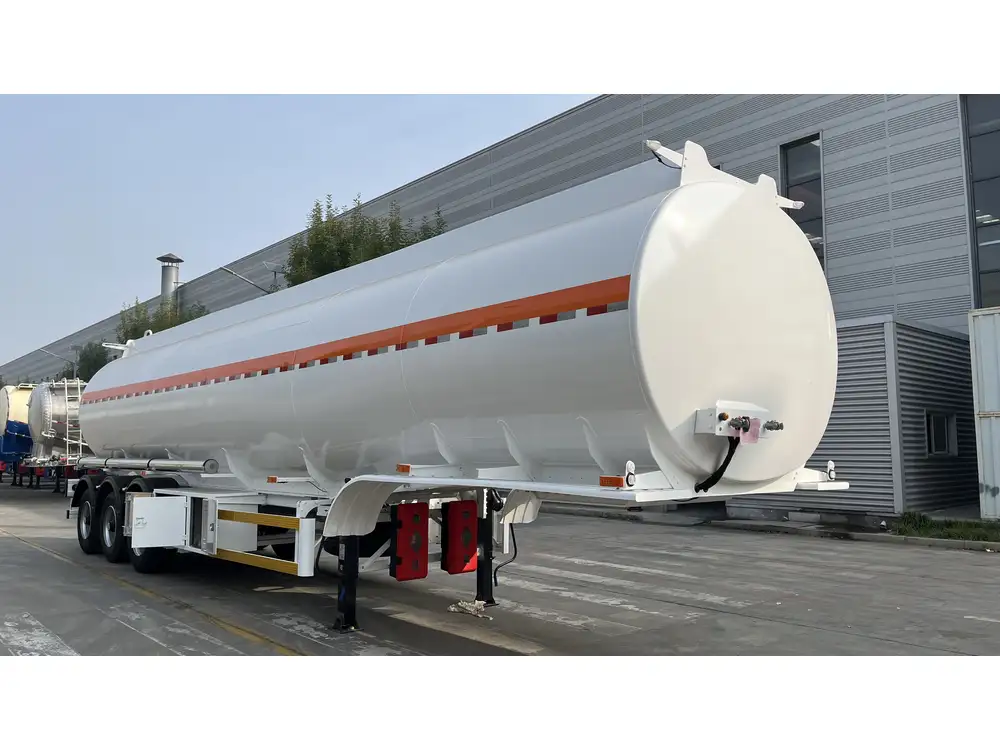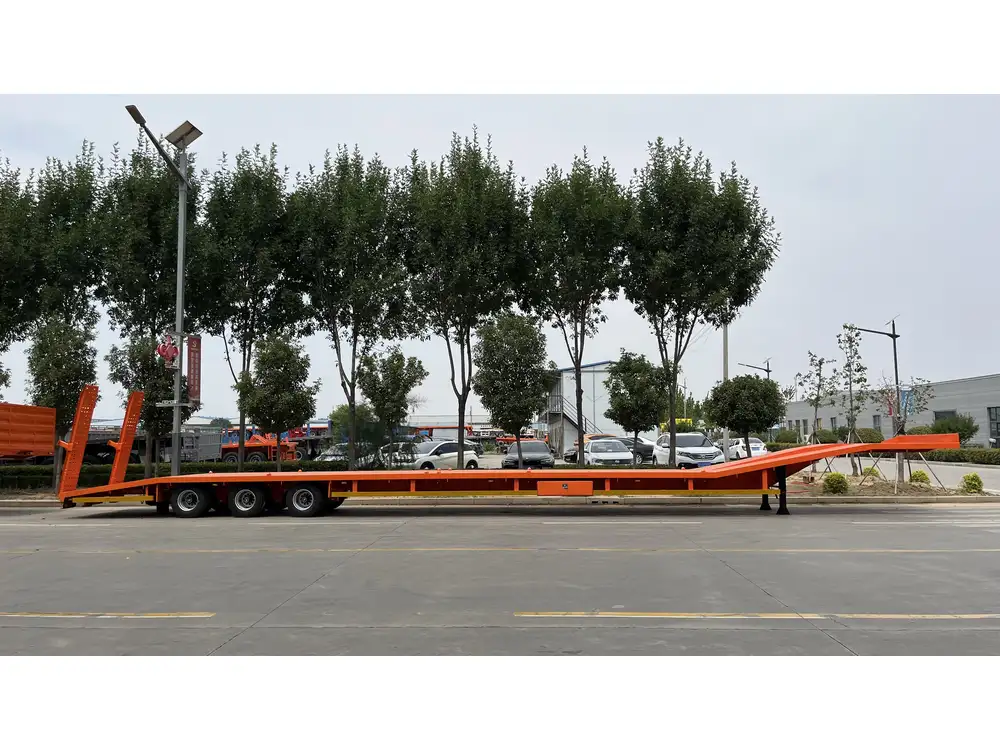The semi-trailer industry plays a pivotal role in the transportation sector, facilitating the movement of goods across vast distances. However, one recurring question that potential buyers often have is: “How much is a semi-trailer?” This question not only pertains to the purchase price but also encompasses various factors such as type, specifications, and additional costs associated with ownership and maintenance. In this article, we delve deep into the multifaceted aspects of semi-trailer pricing to provide you with a thorough understanding of what influences these costs.
1. Types of Semi-Trailers and Their Price Ranges
Before exploring the specifics, it’s essential to understand the different types of semi-trailers available in the market. Each type is designed for particular functions and thus varies in cost.
1.1 Flatbed Semi-Trailers
Flatbed semi-trailers are highly versatile and can transport various types of cargo, including machinery, lumber, and containers. The price typically ranges from $15,000 to $30,000, depending on features like size, material quality, and load capacity.
| Feature | Economy Flatbed | Premium Flatbed |
|---|---|---|
| Starting Price | $15,000 | $30,000 |
| Material | Steel | Aluminum |
| Weight Limit | 48,000 lbs | 60,000 lbs |
| Customization | Limited | Extensive |

1.2 Refrigerated Semi-Trailers (Reefers)
Refrigerated semi-trailers, commonly referred to as reefers, are designed to transport perishable goods. They are generally more expensive due to added insulation and refrigeration units. The price ranges from $25,000 to $75,000.
| Feature | Basic Reefer | High-Performance Reefer |
|---|---|---|
| Starting Price | $25,000 | $75,000 |
| Temperature Control | Basic | Advanced Multi-Zone |
| Cooling Unit | Standard | High-Efficiency |
| Maintenance Cost | Low | Moderate to High |
1.3 Tanker Semi-Trailers
Tanker semi-trailers are specifically designed for transporting liquids, including fuel, chemicals, and food products. The average pricing ranges from $30,000 to $100,000, depending on the tank’s capacity and construction materials.
| Feature | Standard Tanker | Custom Tanker |
|---|---|---|
| Starting Price | $30,000 | $100,000 |
| Capacity | 6,000 gallons | 10,000 gallons |
| Material | Steel | Stainless Steel |
| Safety Features | Basic | Advanced |
1.4 Specialized Semi-Trailers
Specialized trailers designed for specific loads (e.g., car haulers, lowboys) can vary significantly in price. Expect a range between $20,000 and $150,000, highly dictated by the nature of the cargo they are built to carry.
| Trailer Type | Starting Price | Max Price |
|---|---|---|
| Car Hauler | $20,000 | $60,000 |
| Lowboy | $50,000 | $150,000 |
| Heavy-Duty | $80,000 | $200,000 |

2. Factors Affecting the Cost of Semi-Trailers
Now that we have an overview of the different types of semi-trailers, it is crucial to understand the myriad factors that can influence their costs.
2.1 Material Used
The construction material of a semi-trailer can significantly impact its price.
- Steel Trailers: Often less costly and more robust, featuring longevity but may entail higher maintenance.
- Aluminum Trailers: Usually more expensive upfront, these are more lightweight, leading to increased fuel efficiency and lower operational costs over time.
2.2 Size and Capacity
Larger trailers tend to cost more. Semi-trailers typically range from 28 to 53 feet in length. The load capacity, generally from 26,000 lbs to over 60,000 lbs, also plays a critical role in pricing.

2.3 Additional Features
Many semi-trailers come with optional features that can drive up costs:
- Brake Systems: Advanced braking systems can add $1,500 to $5,000 to the total cost.
- Suspension: Air ride suspensions enhance comfort and handling but can add around $3,000 to the base price.
- Customization Options: Branding, interior lighting, and unique hitch systems can significantly increase overall expenses.
3. Additional Costs Associated with Semi-Trailers
Acquiring a semi-trailer involves more than just the sticker price. We must also consider the ongoing costs associated with ownership.
3.1 Maintenance and Repairs
Regular maintenance is crucial for keeping a semi-trailer in good working condition. Estimated annual maintenance costs can range from $1,000 to $5,000, depending on usage and trailer type.

3.2 Insurance
Insuring a semi-trailer can be costly, particularly if used for transporting hazardous materials. Expect to pay between $1,500 and $3,000 annually for standard insurance, while specialized insurance for high-value cargo could be significantly more.
3.3 Depreciation
Semi-trailers depreciate over time, typically losing about 15% to 20% of their value per year, dependent on usage, market demand, and maintenance history.
3.4 Licensing and Registration
Depending on the state in which you operate, licensing and registration fees can vary. Costs can range from $300 to $1,000 annually, subject to local laws and regulations.

4. Financing Options for Semi-Trailers
Many businesses opt to finance their semi-trailer purchases, reducing the immediate financial burden. Here are crucial considerations regarding financing:
4.1 Types of Financing
- Traditional Loans: Banks offer loans with various terms but may require substantial creditworthiness and collateral.
- Leasing: A leasing option can provide lower monthly payments and can be more flexible if you require trailers for a limited time.
- Equipment Financing: Specifically designed for purchasing equipment, allowing businesses to spread the cost over time while maintaining product use.
4.2 Credit Scores and Downpayments
Prospective buyers should be aware that lenders typically consider:
- Credit Score: A higher score can result in better interest rates.
- Downpayment: Planning a downpayment of 10% to 20% can improve approval chances and loan terms.

5. Buying New vs. Used Semi-Trailers
An important decision in semi-trailer acquisition is whether to buy new or used. Each option offers unique benefits and drawbacks.
5.1 New Semi-Trailers
| Advantages | Disadvantages |
|---|---|
| Latest technology | Higher upfront costs |
| Full warranties | Depreciation hits quickly |
| Custom build options | Longer waiting times for delivery |
5.2 Used Semi-Trailers
| Advantages | Disadvantages |
|---|---|
| Lower purchase price | Potential hidden damages |
| More availability | Shorter or no warranty |
| Easier financing options | Limited customization options |

6. Strategies for Maximizing ROI on Your Semi-Trailer Investment
Maximizing return on investment (ROI) from semi-trailer ownership involves:
6.1 Regular Maintenance
Investing in regular maintenance significantly extends the lifespan of your semi-trailer. Implement a proactive maintenance schedule to identify and address potential issues before they escalate into costly repairs.
6.2 Optimizing Load Efficiency
Maximizing load efficiency not only ensures compliance with weight regulations but also improves fuel efficiency, thereby reducing operational costs. Aim to achieve maximum payload capacities within legal limits.

6.3 Investing in Technology
Incorporating telematics and tracking systems can optimize route planning, reduce idle time, and enhance fuel management, ultimately boosting profitability.
7. Conclusion
Understanding the varied costs associated with semi-trailers—from their types and features to financing options and ongoing expenses—is crucial for making an informed purchase decision. We hope this detailed exploration facilitates better understanding and empowers prospective buyers to embark on their semi-trailer investment journeys with confidence.
Final Thoughts
In navigating the semi-trailer market, one critical takeaway is that while it can be tempting to choose the least expensive option available, evaluating total cost of ownership—including maintenance, insurance, and projected ROI—will yield a more sustainable, long-term investment. Armed with this knowledge, you are better equipped to find the semi-trailer that aligns with your needs and budget, ultimately enhancing your business’s operational efficiency and profitability.



